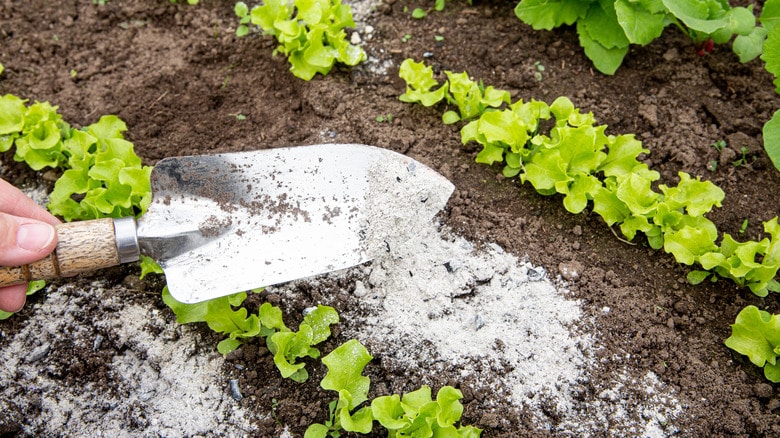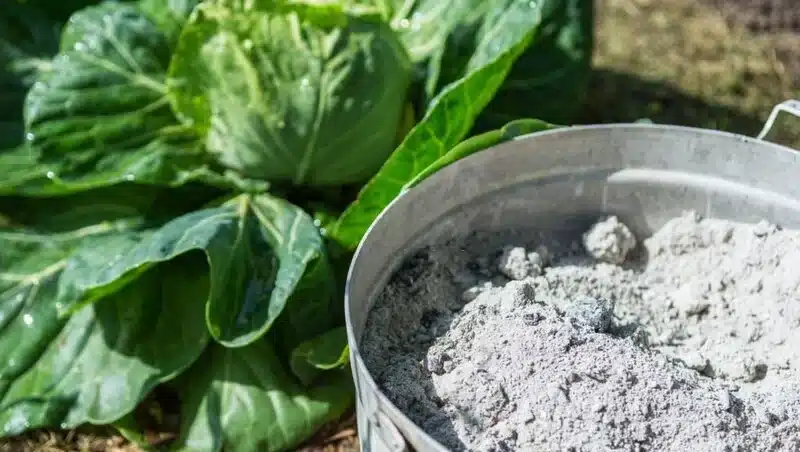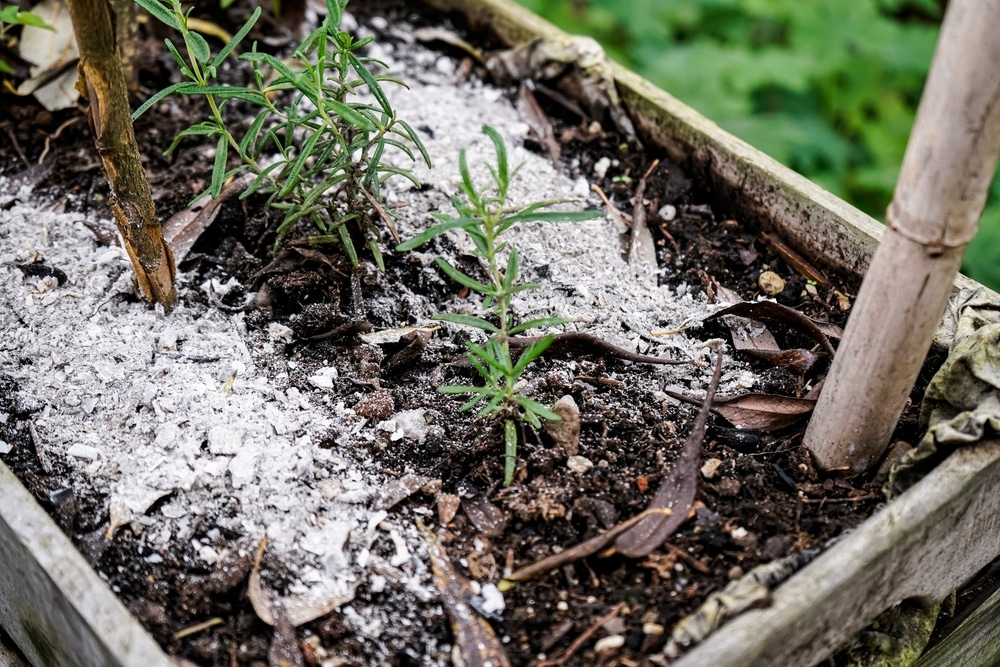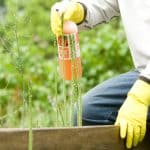Table of Contents
Your fireplace or outdoor fire pit, it’s not just a spot for roasting marshmallows. That ash, the stuff that’s left behind after a good, roaring fire, it’s like gold for your garden. But not all gardens and not all ashes, mind you.
We’re talking wood ashes here. No plastic, no treated wood, just pure, natural, burn-it-in-your-backyard wood.
So, why are wood ashes good for a garden? Well, they’re packed with a bunch of good stuff that helps plants grow. But not all plants, mind you. Some like it acidic, and wood ashes can make the soil too alkaline for them.
Pine trees, azaleas, blueberries…best to keep the ashes away from them. And always remember, too much of a good thing can be bad. Overdoing it with the ashes can kick up the pH of the soil too high. So, moderation is the name of the game here.
Understanding the Role of Wood Ash in the Garden
It’s like that favorite coat that you’ve got, the one you wear when it’s cold out. You don’t wear it all the time, only when the weather calls for it.
The growing season is when your plants need their “coat” of wood ashes. Sprinkle it around, let the nutrients slowly seep into the soil. It’s like a power-boost for your plants. Imagine the calcium and potassium from the wood ashes acting like a superman cape for your tomatoes, peppers, and onions.
The Effect of Wood Ash for Gardeners
Now, you might be wondering, what’s in it for you? Well, the growing season is a tough time for any gardener. But with a sprinkling of wood ashes, you’re not just helping your plants. You’re giving yourself a hand too.
Adding calcium and potassium to the soil helps spur growth and production. Just a quarter cup of wood ashes around mature summer vegetable plants is all it takes. It’s like giving your garden a well-balanced meal, packed with nutrients.
Nutrient Aspects of Wood Ash
Wood ashes, they’re like a multivitamin for your garden. We’re talking potassium, phosphorus, calcium, and a bunch of trace elements. All these nutrients, they’re like a power-packed punch for your plants. Boosting their growth, helping them fight off diseases, it’s like giving them a superhero cape. But remember, it’s not magic dust. You got to know when and how to use it right.

The Proper Usage of Wood Ashes in the Garden
Now you’re thinking, great, I’ve got all this wood ash, let’s get it on the garden. Hold your horses there! It’s not as simple as throwing it onto any old plant. Remember, we said wood ashes can raise the pH of the soil? That’s not good news for plants that like it acidic.
Also, you got to be careful about where your wood ashes come from. Pallets or commercially treated wood products are a no-go. They can contain chemicals harmful to both you and your garden.
So, it’s about using the right ashes, at the right time, for the right plants.
Timing Your Wood Ash Application
Timing, my friend, is everything. Like a good joke, it’s all about delivery. The best time to apply your wood ashes is during the growing season. Remember, your goal here is to provide nutrients to your plants, to power them up. Too early or too late won’t do any good. It’s about giving them their “vitamins” when they need it the most.
Application Techniques for Wood Ash
Now, let’s talk about how to get your wood ashes onto your garden. You’re not just chucking it around willy-nilly. It’s a delicate operation, like grilling the perfect steak.
Some plants, like root vegetables, they love the potash they get from wood ash. Carrots, turnips, radishes, they’ll be thanking you for it. A light top coat around the plants is all it takes. No need to bury them in it.
Determining the Right Wood Ash Quantity
Remember when your mama used to say, “Too much of a good thing can be bad”? It’s the same with wood ashes. You want to give your plants a boost, not overwhelm them.
A quarter cup of wood ashes for mature summer vegetable plants, that’s the sweet spot. Just enough to provide the nutrients they need, without tipping the pH balance of the soil too high.
Comparing Wood Ash Application Rates for Gardens, Lawns, and Flower Beds
Alright, let’s get down to the nitty-gritty. The application rates of wood ash can be a bit tricky, but don’t worry, it’s not rocket science. Now, the common saying is that a five-gallon bucket of wood ash weighs around 20 pounds and is enough for 1,000 square feet. That’s about the same amount of ash you’d get from burning a cord of wood.

Plants That Benefit From Wood Ash Application
Now, not all plants are the same, and some really love the additional nutrients from wood ash. Stone fruit trees, like cherries and apricots, are big fans of the stuff. They do well in alkaline soil, and wood ash can help create that environment. Some root vegetables also appreciate the pot-ash they get from wood ash, so it’s great for carrots, turnips and radishes.
Other vegetables, like peas, asparagus, and leafy greens can also make good use of the nutrients in wood ash. So if you’ve got these in your garden, don’t be stingy with the ash. But remember, everything in moderation folks!
Why Some Plants Thrive on Wood Ash
So you’re probably wondering why some plants seem to love wood ashes so much. Well, during the growing season, it’s common for gardeners to lightly sprinkle wood ashes around plants. This allows the nutrients to slowly seep into the soil.
Tomatoes, peppers, cucumbers, lettuce, kale, and onions can all benefit from a little sprinkling of ashes around their root zone. It’s like a little pick-me-up for the plants, providing them with extra calcium and potassium to spur their growth.
Broadening the Compost Pile With Wood Ash
Wood ashes can also be a great addition to your compost pile. It’s like giving your compost an extra boost of power. But remember, your compost pile should have no more than five to ten percent of its makeup be wood ashes. Any more than that and you risk raising the PH too high.
So, keep it balanced and spread the ash evenly throughout the pile. This will add valuable nutrients to the finished compost.

Potential Issues With Wood Ash in the Garden
Now, don’t get me wrong, wood ashes can be great for the garden, but there can also be some issues. Excessive application of wood ashes can raise the soil PH too high, which might not be ideal for some plants.
Limit Wood Ash Usage on Plants. Why?
There are some plants that aren’t the biggest fans of wood ash. These are usually the ones that prefer acidic soils. So, if you’ve got blueberries, azaleas, rhododendrons, potatoes, or holly in your garden, you might want to limit the wood ash usage around them. They like their soil a bit more on the sour side, if you know what I mean.
Heavy Metal Presence in Wood Ash
Now, here’s an issue that you may not have heard of. Wood ash can sometimes contain heavy metals. That’s right, heavy metals. And no, I’m not talking about the music genre. According to the University of Wisconsin, this is a rather occasional issue and can be further reduced by knowing your wood source is contamination-free.
So, if you’re unsure about the source of your wood, it might be best to use it sparingly or skip it altogether. Better safe than sorry.
Other Ways to Use Wood Ash in the Home and Garden
Besides gardens and lawns, you can also use wood ashes in other ways. If you’ve got trees and shrubs around your home, they might appreciate a little sprinkle of wood ash. You see, wood ash provides not only calcium carbonate but also other valuable nutrients like phosphorus and sulfur.
Now, remember to put on your gloves and dust mask before handling wood ash. Safety first, folks! And when you’re not using it, store the wood ash in a metal container with a lid to keep it dry and ready to use.
Frequently Asked Questions
1. Where to source wood ash?
Well, to be honest, wood ashes are easier to find than a lost sock in a laundromat. If you got a fireplace, a wood-burning stove, or even a backyard fire pit, you’re in the ash business, my friend. Now, you could just dump those ashes into the trash, but why do that, when you’re plants can use them?
2. How to storing ash for future garden use?
Alright, so you’ve got your wood ashes, now what? Well, you gotta store them right. First off, make sure your ashes are cool – nobody wants a fire hazard in their garage. Once they’re cooled down, a metal container with a cover works wonders. A simple galvanized trash can will do the trick. The aim is to keep the ashes dry, so they don’t lose all their good stuff.
Using it immediately in the compost heap is a good idea, but if you’re not ready, store those ashes right!
3. Do other fertilizers play well with wood ash?
Can you mix wood ashes with other fertilizers? Yes, you can. But remember, it’s all about balance. See, wood ashes add calcium and potassium to the soil, which is great for plant growth. But too much can raise the soil pH too high.
That’s where other fertilizers come in. They can help balance out the pH and keep your garden happy. So, don’t be afraid to mix and match – just like your favorite pair of socks.
Conclusion
Dusting off the ashes from your fireplace and sprinkling them over your garden is like giving it the royal treatment. You’re not just discarding waste; you’re offering your plants a nutrient-rich soil amendment, and they’ll repay you in abundance. But remember, you gotta do it right. Don’t go sprinkling ashes all willy-nilly.
Your plants like their soil with a specific pH, and wood ash makes the dirt a bit alkaline, which some plants adore, while others don’t. It’s all about balance, my friend. So, before you start treating your garden like an ashtray, make sure you know what you’re doing. Happy gardening!

I’m John, a “seasoned citizen” and an avid gardener. I live in Minnesota, where our weather and growing conditions can be harsh and challenging. Over the years, I have learned a thing or two about being successful in growing things. I have curated these tips, which I think are helpful for the beginning gardener and the seasoned experts. If you have feedback, let me know in the contact form.




